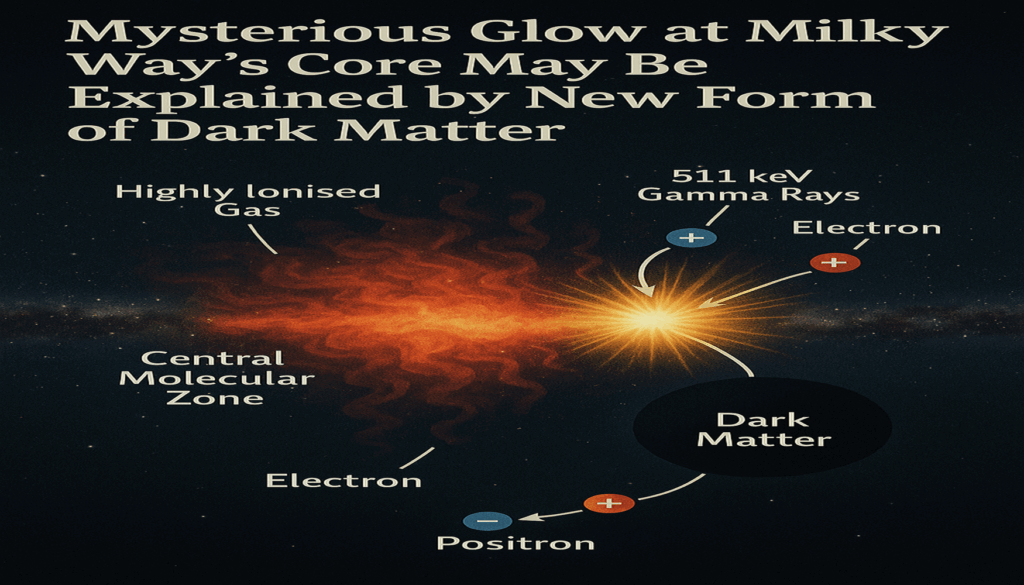Scientists Link High Ionisation and Gamma Ray Signals to Possible Exotic Particle Interactions
London: For decades, astronomers have been baffled by strange, unexplained phenomena emerging from the heart of our own galaxy, the Milky Way. Now, scientists are proposing a bold new explanation: a new form of dark matter might be responsible for the mystery.
Two Cosmic Clues: Charged Gas and Gamma Glows
At the centre of this cosmic enigma is a region known as the Central Molecular Zone (CMZ) — a dense, turbulent cloud of gas near the Milky Way’s core. Scientists have observed that the gas in this zone appears to be ionised at unexpectedly high levels. Ionisation refers to the process where atoms lose electrons and become electrically charged — and in this case, something powerful seems to be stripping those electrons away.
At the same time, telescopes have picked up an unusual and persistent gamma ray signal measuring 511 kilo-electronvolts (keV) — a highly specific energy signature that matches the annihilation of electrons and positrons (the antimatter twin of electrons).
Electron-Positron Annihilation: A Bright Flash of Mystery
The 511 keV gamma ray glow is especially intriguing. It is produced when a positron collides with an electron, resulting in mutual destruction and a burst of energy in the form of light. But where are all these positrons coming from?
That’s the puzzle — and a growing number of physicists believe the answer could lie in the dark sector.
Dark Matter Enters the Scene
Dark matter, the elusive substance thought to make up about 85% of the matter in the universe, has long remained invisible to direct observation. However, scientists now propose that an exotic new type of dark matter particle could be producing both the high ionisation levels and the positron surges — essentially solving two galactic mysteries with one theory.
This theory suggests that when these dark matter particles interact, they release energetic positrons, which then collide with electrons to create the 511 keV gamma ray signature, while also causing the ionisation of gas in the CMZ.
A Galactic Breakthrough in the Making?
If proven true, this could represent a major breakthrough in astrophysics — not only would it help explain phenomena that have puzzled astronomers for years, but it might also offer a rare, indirect window into the hidden world of dark matter.
Further research and more advanced space-based telescopes may be needed to confirm the dark matter hypothesis, but scientists are optimistic. As one researcher put it:
“We might be on the brink of uncovering one of the universe’s deepest secrets — and it’s hiding right in our cosmic backyard.”
Tags:
#MilkyWay #DarkMatter #Astrophysics #GammaRay #511keV #ElectronPositron #GalacticCenter #SpaceScience #CMZ #SpaceMystery #NASA #CosmicAnomalies #AstronomyNews


